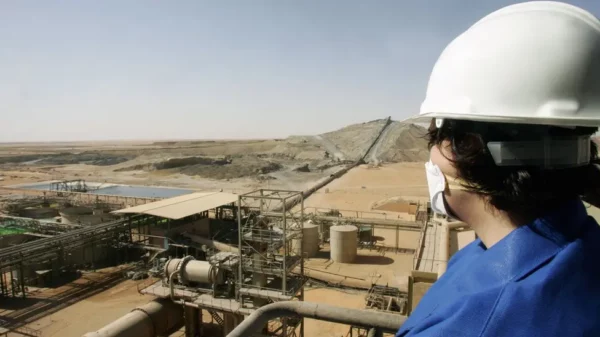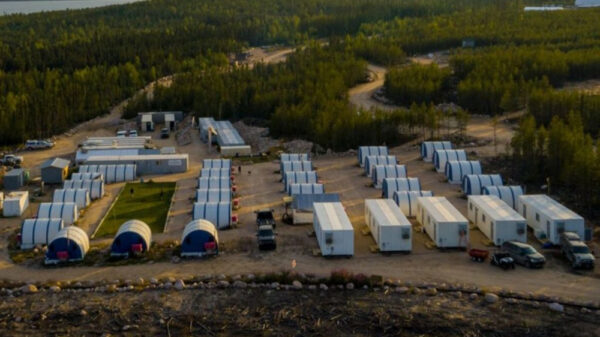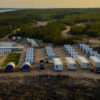Canada is gearing up to be a leader in the nuclear supply chain worldwide and its largest province will spearhead the construction of small modular reactors while boosting the region’s and the country’s economy.
A recent report by the Conference Board of Canada showed that building a fleet of SMRs will contribute around $15.3 billion to Canada’s gross domestic product (GDP) and $1.3 billion to Ontario’s GDP. The project is meant to generate $4.9 billion in tax revenues over 65 years.
Back in July, the Ontario government announced plans to expand its small modular reactor (SMR) program at the Darlington nuclear site in partnership with Ontario Power Generation (OPG). This will add three more SMRs to the province generating enough power for 1.2 million homes.
“Our plan to construct four new reactors at Darlington will also generate opportunities across Ontario and Canada as suppliers of nuclear components and services have an opportunity to expand to serve the growing SMR market here and abroad,” OPG CEO Ken Hartwick said in a statement on Friday.
The nuclear plants will also be able to sustain approximately 2,000 jobs per year.

Economic impact of all phases. Graph via CBOC.
Read more: Canada invests up to $74M in small modular reactors for Saskatchewan
Read more: Ontario to expand nuclear power adding 3 small modular reactors
Ontario Power Generation will opt for SMR ‘fleet approach’
OPG has adopted a fleet approach that allows for the sharing of common infrastructure, such as cooling water intake, across the four SMR units. This strategic move significantly reduces the overall project costs.
The construction of the first unit is set to be completed by OPG and its project partners in 2028, with power production for Ontario’s grid commencing in 2029. The remaining reactors are scheduled to come online in the mid-2030s, further bolstering Ontario’s power supply.
Minister of Energy Todd Smith said that Canada’s “open for business” approach has led to investments across Ontario, including electric vehicles and battery manufacturing.
“Today’s report demonstrates how Ontario’s SMR program will create thousands more highly skilled, good paying jobs while ensuring we have the reliable, affordable and clean electricity we need to power the next major international investment, the new homes we are building and industries as they grow and electrify.”
Read more: ATHA Energy performs largest multi-platform EM survey in the history of the Athabasca Basin
Read more: What are the top 3 uranium-producing countries?
Other provinces such as Saskatchewan will also develop SMRs in the upcoming years. Last August, the federal government announced it is investing up to $74 million in SMR development which will be led by SaskPower.
SaskPower has chosen to utilize General Electric Co’s (NYSE: GE) Hitachi BWRX-300 SMR reactor for potential deployment in the province somewhere around the year 2034 with construction beginning as early as 2030. Saskatchewan and New Brunswick also signed a memorandum of understanding for SMR development in April this year
SNC-Lavalin Group Inc. (TSX: SNC) has been engaging in partnerships abroad to help develop nuclear technology as well. The major engineering company entered a partnership with the British nuclear technology developer MoltexFLEX last April, a company actively developing SMRs and uranium fuel needed for them.
The federal government launched a $29.6 million SMR development program in February intended to help with the country’s transition to net zero.
A recent report by the analytics firm Research and Markets showed that the global small modular reactor market is estimated to grow to US$6.8 billion by 2030 from an estimated US$5.8 billion in 2023; it is expected to record a compound annual rate (CAGR) of 2.3 per cent.
The increase in nuclear power investments in Canada and worldwide has also triggered a demand for the nuclear fuel’s main component, uranium.
Canadian uranium explorers have an advantage given the proximity to the Athabasca Basin, which holds among the largest concentrations of uranium in the world. ATHA Energy Corp. (CSE: SASK) (FRA: X5U) (OTCQB: SASKF) holds the largest land package in the region and recently completed the largest electromagnetic survey in the region. ATHA also holds 10 per cent carried interest portfolio of claims that are actively operated by Nexgen Energy Ltd. (TSX: NXE) and IsoEnergy Ltd. (TSXV: ISO).
Other uranium companies operating in the region include Cameco Corporation‘s (TSX: CCO), Denison Mines (TSX: DML) (NYSE: DNN), Skyharbour Resources Ltd (TSXV: SYH) (OTCQX: SYHBF)and Fission Uranium Corp. (TSX: FCU) (OTCQX: FCUUF) (FSE: 2FU).
ATHA Energy Corp is a sponsor of Mugglehead News coverage.














